Serious accident transforms photographer's outlook into a journey that takes her to the heart of nature and wildlife, Yang Feiyue reports.
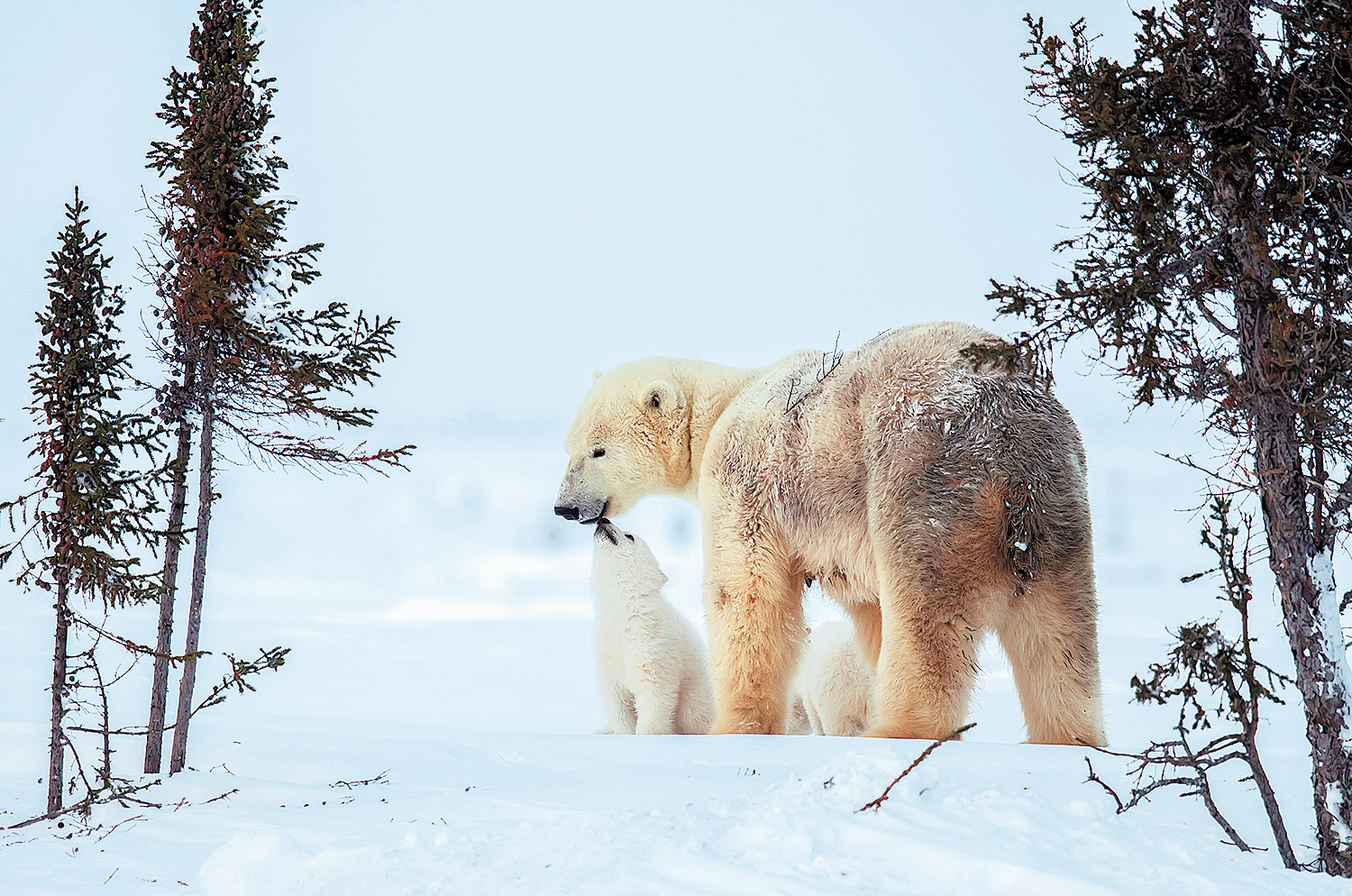
A traffic accident put Zhou Donglin's rising real estate career on hold, changed her outlook, and sent her on a soul-searching journey into the heart of nature.
The woman in her 30s from East China's Zhejiang province exudes a laid-back vibe that belies her thrilling experiences up hill and down dale, chasing the mind-boggling power of love and the lives of wild creatures.
Zhou is traveling during Spring Festival in Uganda, attempting to capture precious images of mountain gorillas through her lens.
"I plan to spend 20 days exploring western and central Africa, zooming in on the creature that has a very small population but shares 98 percent similar genes with human beings," Zhou says.
READ MORE: Protecting nature through photography
Her interest in the subject was inspired by a meeting with internationally renowned British primatologist Jane Goodall, 90, at the China Wildlife Image and Video Competition in Beijing in December.
"Her lifelong devotion to chimpanzees is admirable and piqued my curiosity about other great apes," she says.
So far, Zhou has hiked through the tropical rainforest with help from a hired guide and keeps close tabs on mountain gorillas with distinctive silver backs.
"I enjoy delving into animal communities and have tried to tell their tales of kinship, friendship, life and death, and competition. If these stories can move the audience and touch their hearts, they will come to love animals. This love will, in turn, inspire them to protect nature," Zhou says.
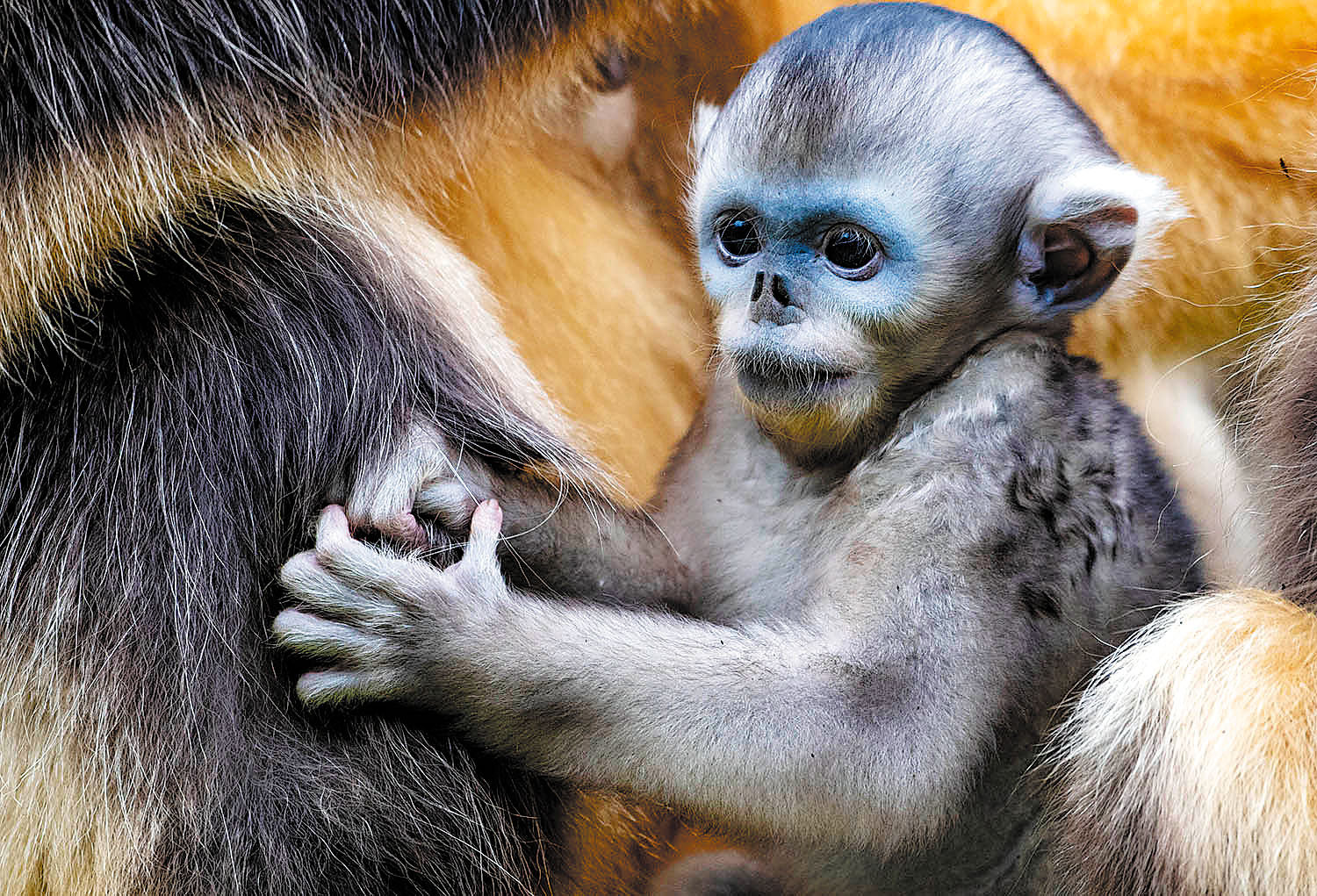
In December, Zhou's photography work highlighting an upland buzzard sacrificing itself to protect its chicks from a snow leopard on a precarious cliff stood out from the more than 37,600 nature-themed image and video submissions from across the world. It also won the hearts of the judging committee at the China Wildlife Image and Video Competition awards ceremony hosted by the Chinese National Geography in Beijing.
The photo was shot in the Garze Tibetan autonomous prefecture in Southwest China's Sichuan province.
"I was in awe of the bird's maternal instincts. It could have put up a good fight, which might have chased the leopard off," Zhou recalls.
It wasn't until she saw the chicks were hidden under the bird that she understood how the fight would expose the babies. "It was purely tragic and soul-stirring the way she sacrificed herself without protest," Zhou says.
Bao Yongqing, a senior official from the Qilian Mountains Nature Conservation Association based in Northwest China's Qinghai province, says Zhou's work captures an eternal moment, recording a timeless natural story that allows viewers to witness a world where the "law of the jungle" and "tender affection" coexist.
"It is a collision of life's instincts — the snow leopard's hunt clashing with the motherly love of the upland buzzard who sacrifices itself to protect its young," Bao says. "Every detail in the image is worth examining, drawing each observer to speculate on the unfolding story.
"The work reveals the stunning and perilous tensions of nature, making it an extraordinary creation that expands the boundaries of our understanding," he adds.
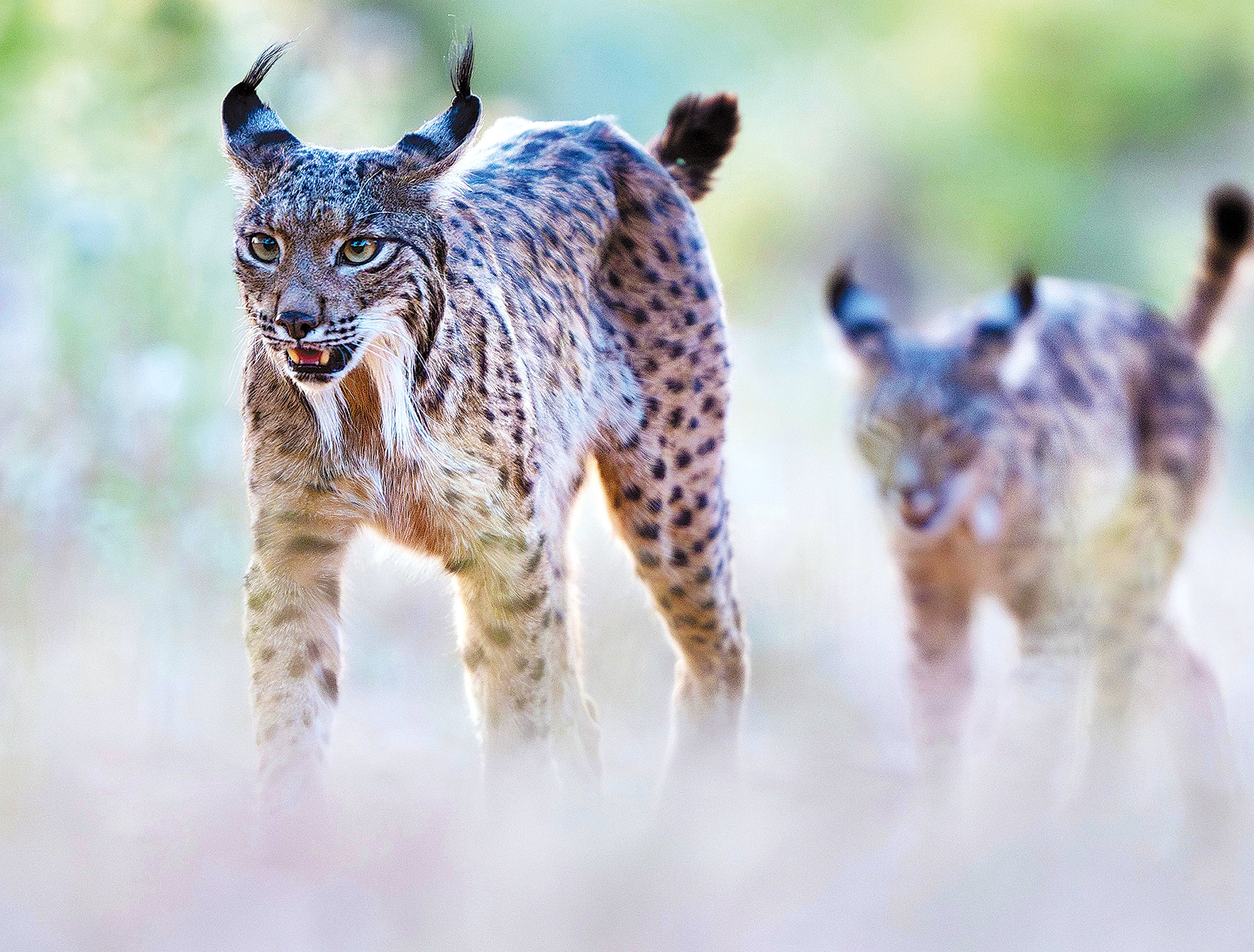
Zhou started contemplating the meaning of life when she was confined to bed for six months following a car crash in 2013.
"The doctor told me I was likely to lose mobility," she recalls.
She realized she had been striving to be a straight-A student to please her parents and was trying to earn money, as was expected of her after graduation. "I was too busy to try to figure out what I want," she says.
As she reflected on her past and looked to the future, her childhood dream of exploring every corner of the planet sprang to mind.
"I love watching documentaries about wildlife, man and nature, which inspired me to pursue a path in that direction," she says.
When she fully recovered, she picked up the camera and backpacked to Africa, Europe and the polar lands.
She was immediately overwhelmed by the power of the wild.
A female lion sniffing a sea of blossoms in Zimbabwe, a little hummingbird suckling honey against an ongoing storm near a volcano in Costa Rica, and a brown mother bear feeding fish to her baby in Alaska were among the wonders that blew her mind.
"I enjoy capturing these animals in their natural, unrestrained state, observing their struggle against nature and the friendships, love, conflict, and family bonds in their world," she says.
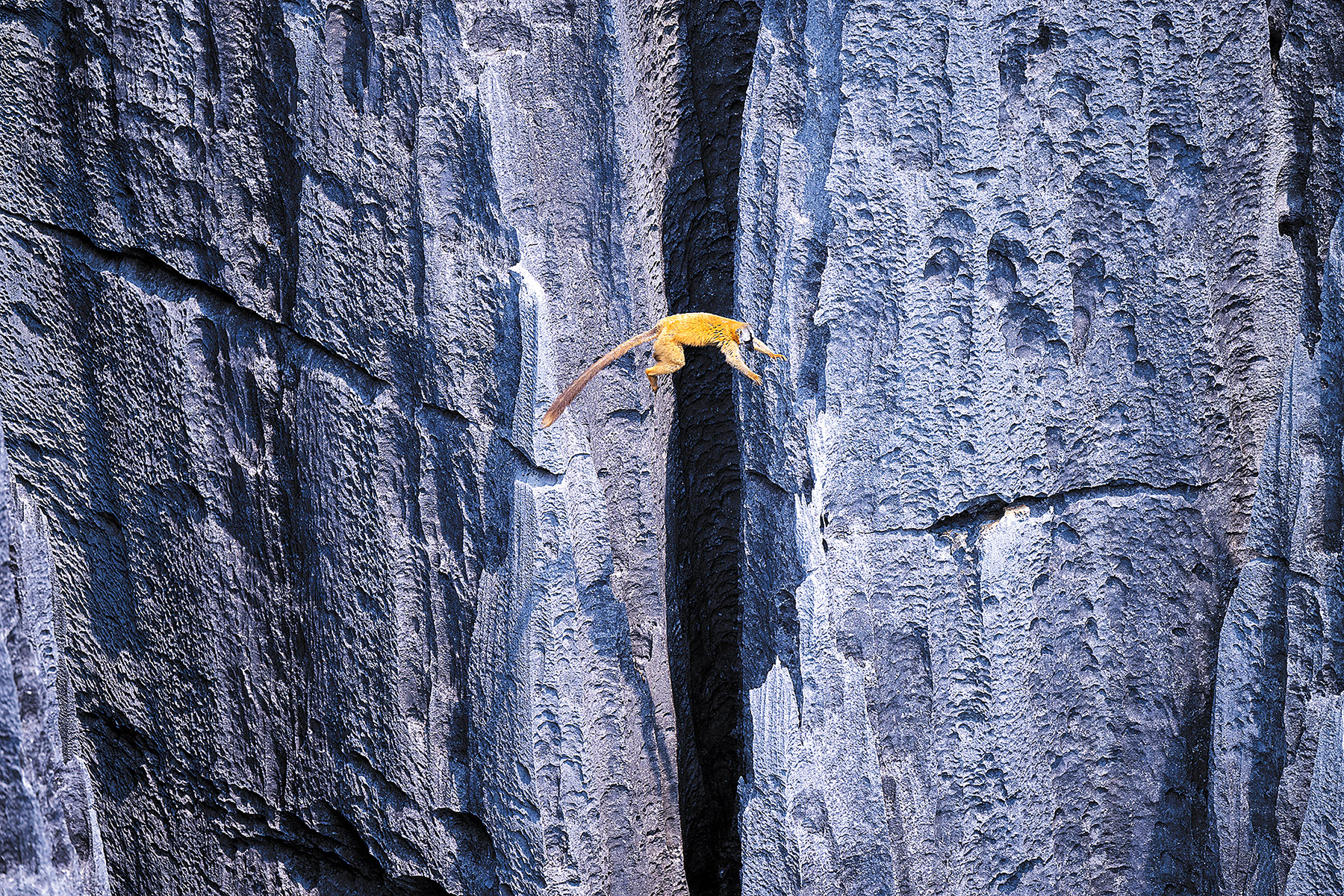
With her MBA background, Zhou says it's key to pick up a wealth of knowledge about animals before getting into the field. "Before photographing a jaguar, I would first research its characteristics — its habitat, behavioral traits, and how old it gets before reaching maturity," she says.
For a female photographer, it's important to physically and mentally prepare for carrying heavy equipment and traversing rough conditions.
"Nature photographers often use extremely long lenses, which are very heavy, and hiking in the wilderness with such gear requires a lot of physical strength. Especially when a tripod isn't an option and you have to support the lens with your shoulder," Zhou says.
Endurance is also key — being able to handle hunger, dirt and sometimes thirst, as certain places don't allow for easy access to clean water.
"Every trip to answer the call of nature can be dangerous, as it puts you at risk of encountering wildlife," she explains.
As her skills developed, Zhou honed her style and principles. For instance, the scene being captured must be authentic and must be photographed in the animal's natural state.
"It is essential not to use bait, set up scenes, or disturb their natural life rhythms — such as forcing a bird to fly or deliberately pruning a bird's nest to make it photogenic," she says. "If there is a conflict between capturing a shot and jeopardizing the animal's existence and safety, one must decisively abandon the shot."
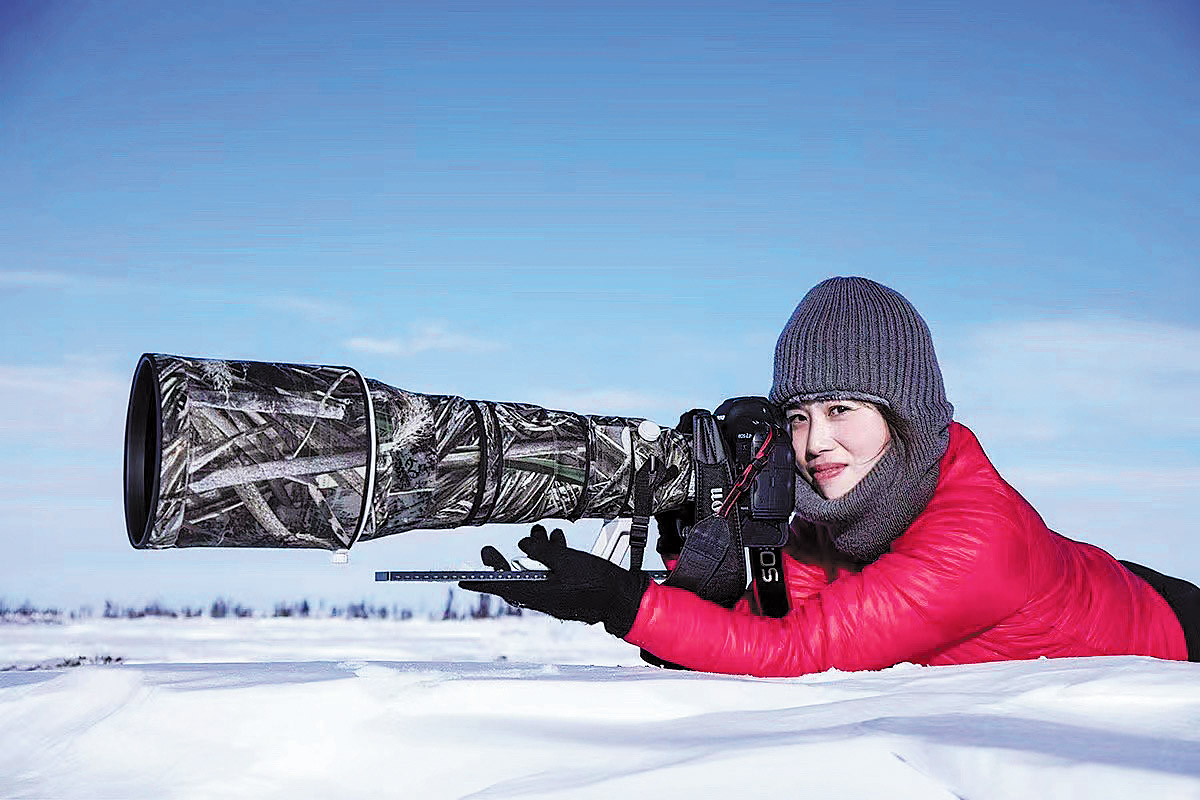
The years Zhou has spent capturing nature and wildlife have not just given rise to tens of thousands of valuable images but endeared her to the animals, prompting her to call attention to their protection.
In 2019, she worked with ornithologist Lin Qingxian from Xiamen University based in East China's Fujian province to set up Seeking Wild, a nonprofit organization committed to raising public awareness of wildlife conservation through field research, rescue efforts, and ecological photography. Additionally, Zhou held a personal photography exhibition, with all proceeds going to natural conservation endeavors.
ALSO READ: Nature’s precious heritage
To date, her NGO has about 160,000 followers on the social media platform Sina Weibo.
"The images captured by a photographer are more a source of materials for wildlife conservation, as what the eye sees is the most direct and visually impactful," Zhou explains of the establishment of Seeking Wild. "However, when it comes to follow-up actions, I believe it requires the involvement of organizations that can implement practical measures."
She knows it's unrealistic to expect immediate major changes through this small cause.
"We are small in the grand scheme of the universe. On the path of caring for the environment and protecting animals, taking a step forward, even if it's just one, is far more meaningful than remaining stagnant," Zhou says.
Contact the writer at yangfeiyue@chinadaily.com.cn



